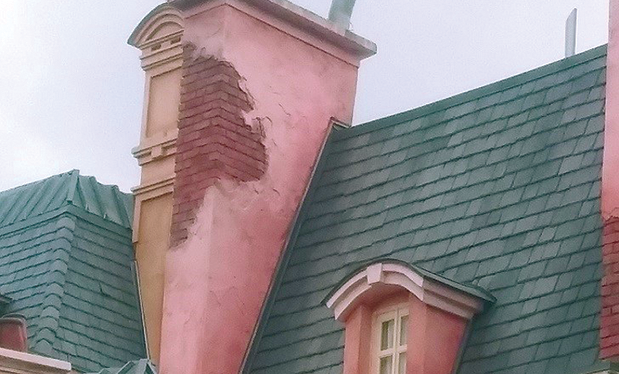It has been said the one constant in life is change, and this holds true for the 2024 International Energy Conservation Code. The IECC is part of a family of comprehensive, coordinated and modern model codes that includes the IECC, International Building Code® and International Residential Code® along with 11 other I-Codes published by the International Code Council.®
The IECC provides minimum requirements for the efficient use of energy in buildings using prescriptive and performance-based provisions. The IECC is divided into sections for commercial and residential buildings (one- and two-family dwellings, townhouses, and residential buildings three stories or less).
Traditionally, the IECC has been updated through ICC’s code development process. During the process, which began in the late 1990s, ICC solicits code change proposals from the public, including building officials, about two to three years ahead of the anticipated publication year.
For the 2024 IECC and beyond, a standards development process will be used to update the document. Currently, ICC uses its standards development process to update and publish 18 ICC standards, including ICC/NSSA 500, “Standard for the Design and Construction of Storm Shelters”; ICC 600, “Standard for Residential Construction in High-Wind Regions”; and ICC 700, “National Green Building Standard.” In addition, ICC is in the process of creating seven other documents through its standards development process.
The traditional process
Typically, code change proposals are posted on ICC’s website for public review. ICC then holds hearings referred to as Committee Action Hearings that are open to the public. Proponents and opponents are permitted to speak to persuade the committee to accept or reject proposed code changes. Following the testimonies, the committee votes whether to accept or reject the proposed change. Code change proposals that are accepted are posted on ICC’s website about one month after the conclusion of the hearings.
After the Committee Action Hearings, there is a public comment period of about six weeks during which ICC accepts comments addressing the code change proposals. The next step in the process is a Public Comment Hearing. During these hearings, proponents and opponents also are permitted to speak about proposed code changes. Once all speakers have spoken, ICC governmental members in attendance vote on the proposed code change. A final vote is conducted two to three weeks following the conclusion of a Public Comment Hearing. Approved code changes then are prepared for publication in the upcoming updated ICC codes.
The new process
In 2020, ICC began the preliminary review for changing the method of updating the IECC, Chapter 11—Energy Efficiency in the IRC and Chapter 15—Energy Efficiency in the International Code Council Performance Code® for Buildings and Facilities. The idea for the change originated from concerns with the code development process and the results it produced. ICC hoped the consensus procedures used for standards development would permit more time for the various sectors (regulators, manufacturers, installers, users, etc.) to evaluate proposed changes to the code versus the limited time available during the traditional code hearings, make the IECC easier to adopt and increase the code’s energy-saving requirements.
In late 2020, ICC began accepting public input regarding changes to the standards development process. ICC received more than 200 public comments from stakeholders. NRCA opposed the change believing code officials, whose responsibility it is to interpret and enforce the codes, should decide what code change proposals should be accepted.
In early March 2021, ICC announced the change to the standards development process for updating the IECC. ICC then began accepting applications for two consensus committees (commercial and residential) that would review IECC code change proposals. Each committee comprises about 45 members representing multiple interest groups. Each committee consists of no more than one-third of one particular interest group, and one-third of each committee’s members are government officials who also act as committee chairmen.
The committees are further divided into subcommittees. The subcommittees under the Commercial Consensus Committee are Electrical Power, Lighting and Renewables; Envelope and Embodied Energy; HVAC and Water Heating; and Modeling, Whole Building Metrics, Zero Energy. The subcommittees under the Residential Consensus Committee are Consistency and Administration; Economics, Modeling and Whole-building Metrics; Electrical Power, Lighting, Renewable Energy Generation and Storage; Envelope and Embodied Energy; Existing Buildings; and HVAC and Water Heating.
The subcommittees for each consensus committee comprise 10-25 members; some subcommittee members also are members of the respective consensus committee. The balance of the subcommittee members resembles the main consensus committees in that no more than one-third of one particular interest group can serve on a subcommittee. The interest groups on the subcommittees are from government, manufacturing, builders, the public, users, consumers, standards and utilities. NRCA representatives applied for several committee and subcommittee positions but were not selected to fill any of the openings.
For the 2024 IECC, ICC received more than 450 code change proposals to the IECC and IRC’s Chapter 11 between July 2021 and October 2021. ICC assigned each proposal to the appropriate subcommittee for review and consideration. The consensus committees and subcommittees began meeting in late 2021 with the first round of reviews to be completed between May and June 2022. For the 2024 IECC, meetings were held virtually with consensus committees and subcommittees generally meeting multiple times per month.
There were more than 40 roofing-related code change proposals received by ICC for the 2024 IECC and 2024 IRC, Chapter 11. NRCA submitted 12 code change proposals primarily affecting roof system replacement and insulation requirements.
The next step in the standard development process is posting the code change proposals accepted by the two consensus committees for a first public comment period. At the close of the first comment period, the subcommittees will reconvene to review the comments and recommend any changes to the respective consensus committees. A second public comment period follows that includes substantiative text changes only. Public comment cycles continue until no substantiative changes are received.
Goals are met
When comparing the code development process for the 2021 IECC with the standards development process for the 2024 IECC, it appears ICC’s goal of deliberating code change proposals in greater depth and detail is being met. For the 2021 IECC code cycle, about 560 proposals were heard during 10 days by a 12-member residential committee and a 16-member commercial committee. Compare that with about 450 proposals for the 2024 IECC considered by the two committees and subcommittees consisting of about 90 members each during five to six months.
Another comparison between the former code development process and standards development process is the IECC now will be a continual maintenance document, which means rather than updating the code every three years, updates may be proposed at any time and, if accepted by ICC, made available for jurisdictions to adopt immediately.
ICC hopes to have final language for the 2024 IECC by May or June 2023. If this cannot be achieved, commentors will be notified of the ICC appeal process. At this point, final approval of code changes will be voted on by more than 2,000 code officials. Those that are accepted will be included in the updated 2024 IECC and 2024 IRC, Chapter 11 for publication in the fall of 2023.
Glen Clapper, AIA, LEED AP, is an NRCA director of technical services.



